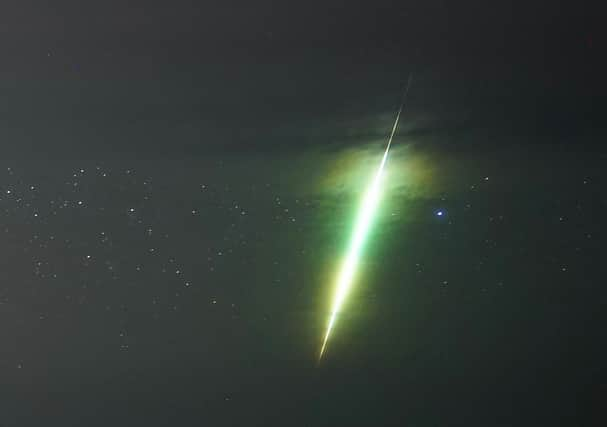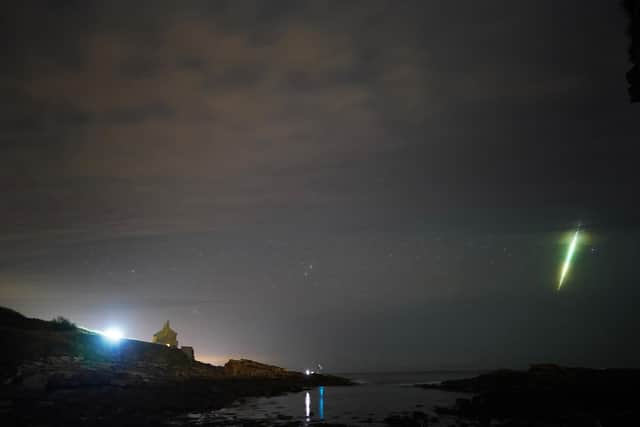Draconid meteor shower 2021: Spectacular images show dazzling meteor shooting through the night sky


The weather threatened to put a dampener on the annual Draconid meteor shower, but the clouds parted for some, offering a glimpse of the spectacular display.
One particularly dazzling meteor shot through the sky over Howick rocks in Northumberland as a fisherman looked on.
Advertisement
Hide AdAdvertisement
Hide AdNamed after the constellation of Draco the dragon, the Draconids occur every year and are one of the two meteor showers to light up the skies in October.


What is the Draconid meteor shower?
Also known as the Giacobinids, it is an annual meteor shower that occurs every October.
Unlike most meteor showers, the Draconid can be seen at much more sociable times.
You normally have to get up at around 3am to see a meteor shower, but the Draconid can be seen best in the evening.
Meteor showers are caused when Earth passes through a cloud of space debris from a comet.
The Draconid meteor shower is made from the debris of comet 21 P/ Giacobini-Zinner.
The shower’s radiant point is the head of the constellation Draco the Dragon, giving the shower its name.
However, the shower throws hundreds of meteors across the sky every hour, so you don’t need to find the star itself in order to see it.
Advertisement
Hide AdAdvertisement
Hide AdBack in 2011, more than 600 meteors were seen per hour over Europe.
A message from the Editor:
Thank you for reading this article. We're more reliant on your support than ever as the shift in consumer habits brought about by coronavirus impacts our advertisers.
If you haven't already, please consider supporting our trusted, fact-checked journalism by taking out a digital subscription.
Comments
Want to join the conversation? Please or to comment on this article.
